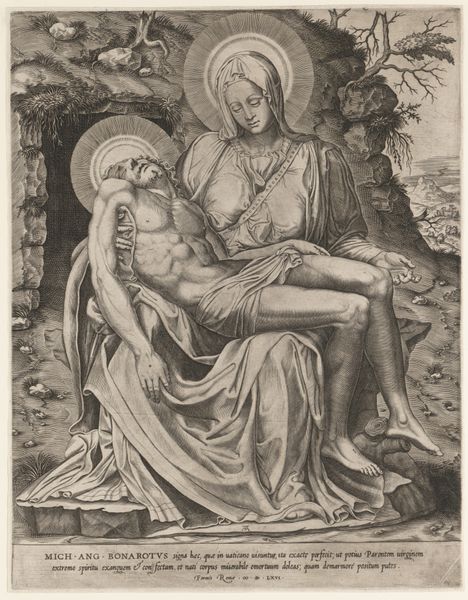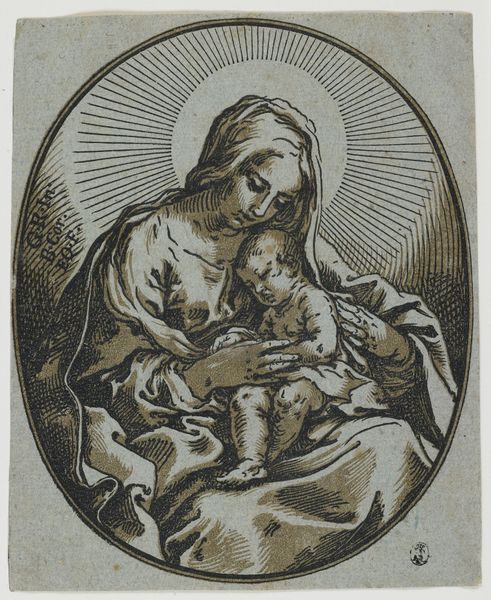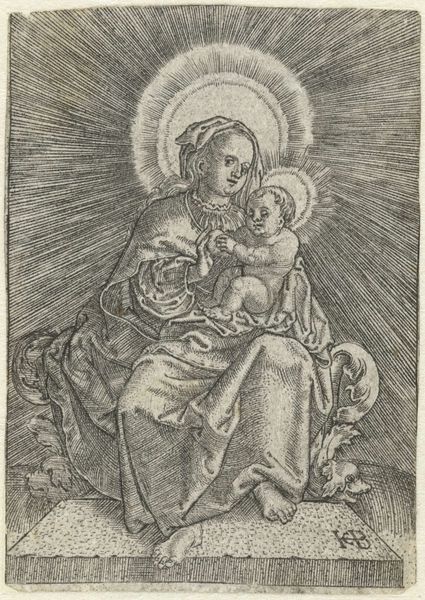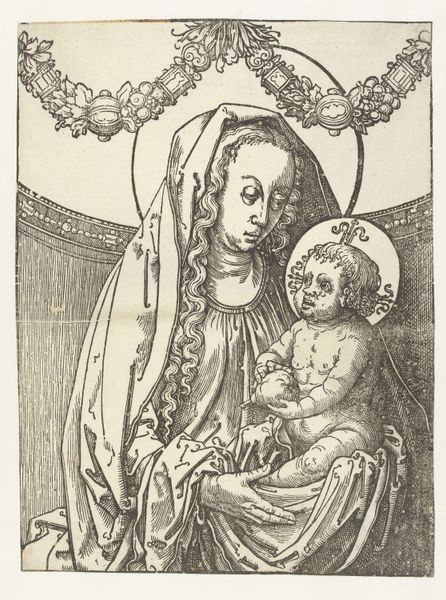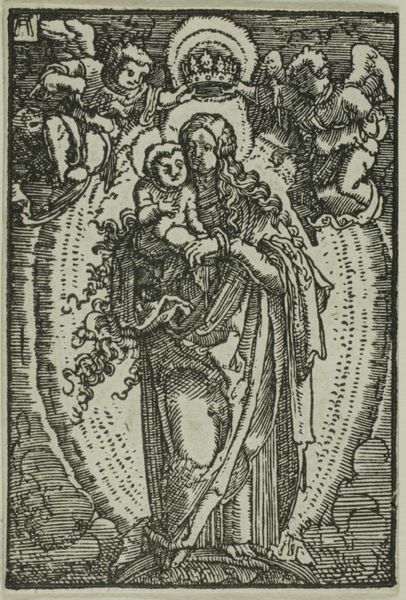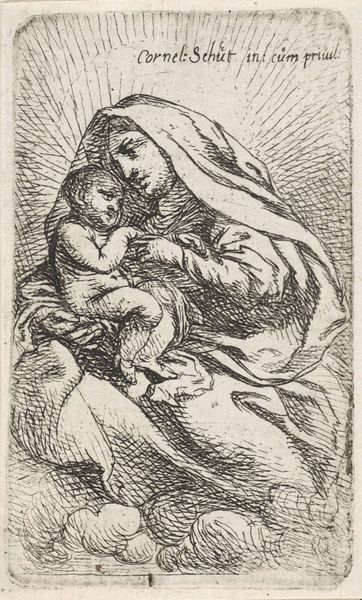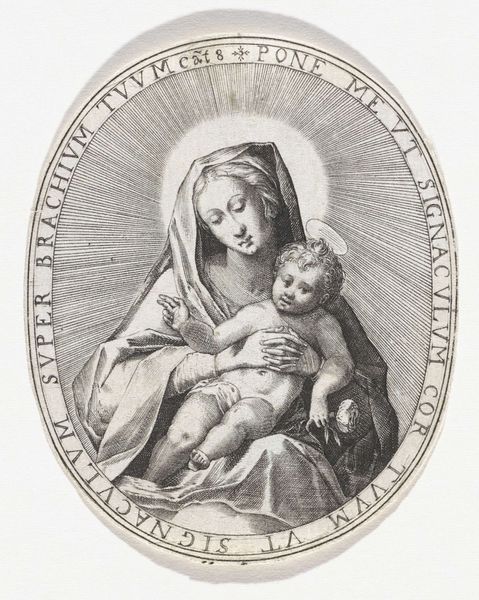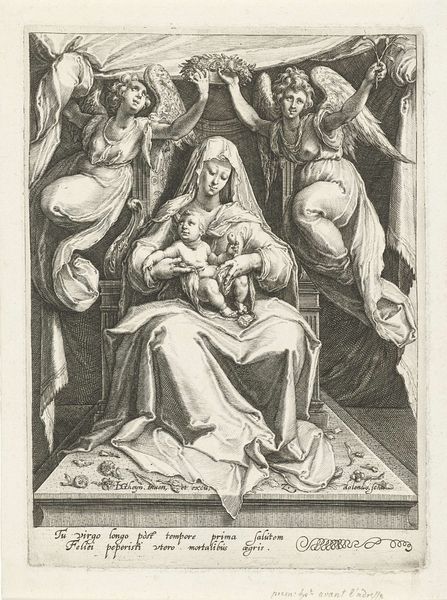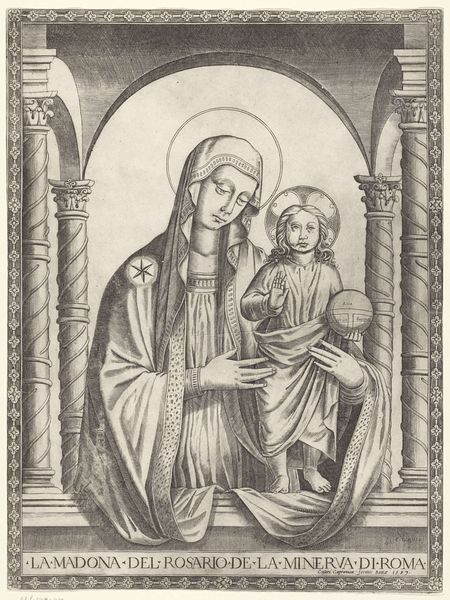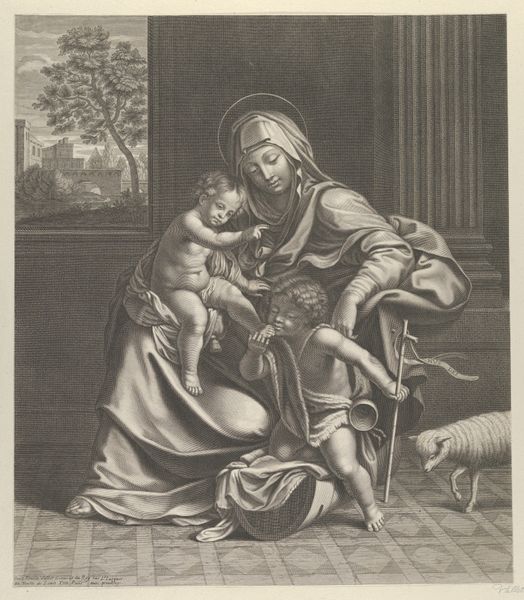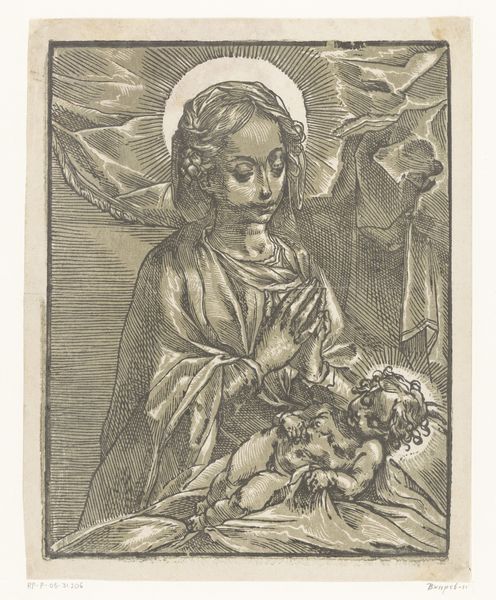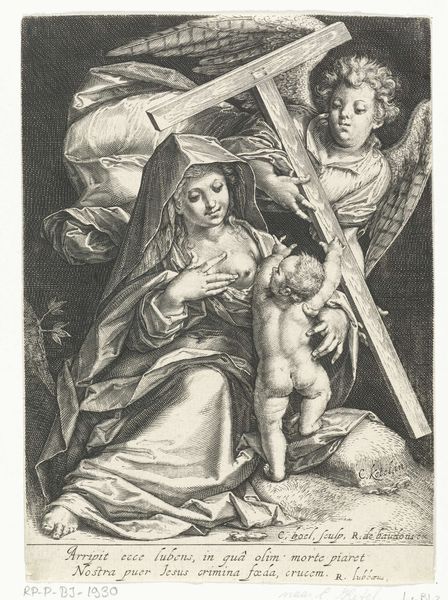
print, engraving
#
portrait
# print
#
figuration
#
line
#
portrait drawing
#
history-painting
#
northern-renaissance
#
engraving
Dimensions: height 85 mm, width 76 mm
Copyright: Rijks Museum: Open Domain
Editor: This engraving, "Heilige Anna-te-Drieën," made between 1488 and 1492 by the Master of the Amsterdam Cabinet, has a very striking composition. It feels both intimate and monumental at the same time. What do you see in this piece from a formalist perspective? Curator: The composition immediately grabs my attention. Notice the carefully constructed arrangement of figures within a defined architectural space. The lines are deliberately placed to create a sense of depth, leading the eye toward the figures. Tell me, what does the interplay of light and shadow suggest to you? Editor: The light seems to emphasize the faces, drawing you into the expressions. The use of line in the drapery really defines the forms too. It looks very detailed! Curator: Indeed. The mastery lies in how line and shading collaborate to depict volume and texture with great care and detail. Note the texture, for example, evident in the garments. How does the line contribute to an understanding of space? Editor: The varying line weights definitely help. Thicker lines define edges, while thinner lines create subtle shadows, like the folds in Mary's robe. Also, look at how they form halos of different thickness around the figures' heads! Curator: Precisely! Furthermore, the deliberate arrangement, placing St. Anne behind the Virgin, reinforces a hierarchy of depth. By observing the distribution of dark and light and how it defines form, we find a satisfying equilibrium in the overall design. Editor: It’s amazing how much visual information can be conveyed just through line and shading! I will pay more attention to line work. Curator: As we reflect on this "Heilige Anna-te-Drieën," we’ve unpacked how the artist uses intrinsic elements to craft a very layered composition, which contributes significantly to our understanding and appreciation of the print.
Comments
No comments
Be the first to comment and join the conversation on the ultimate creative platform.
